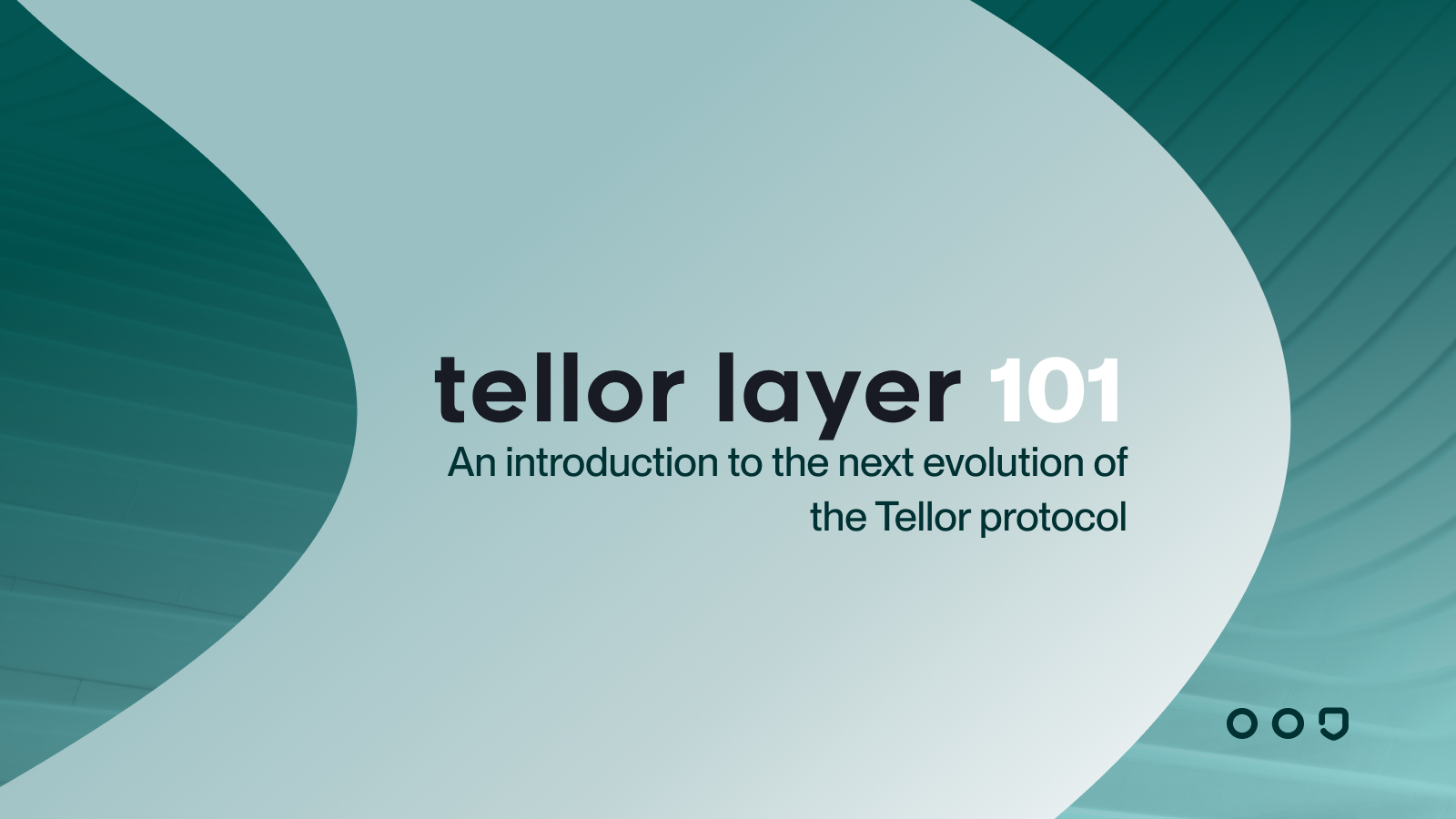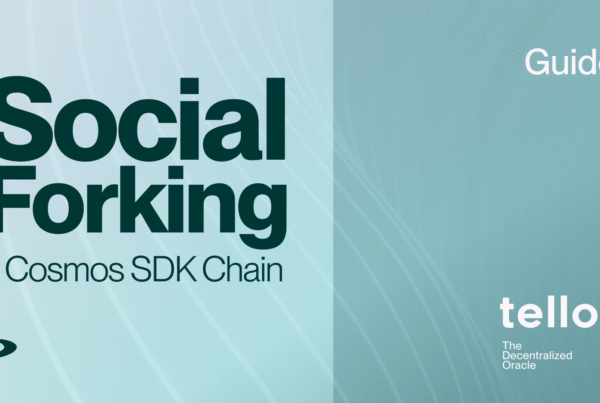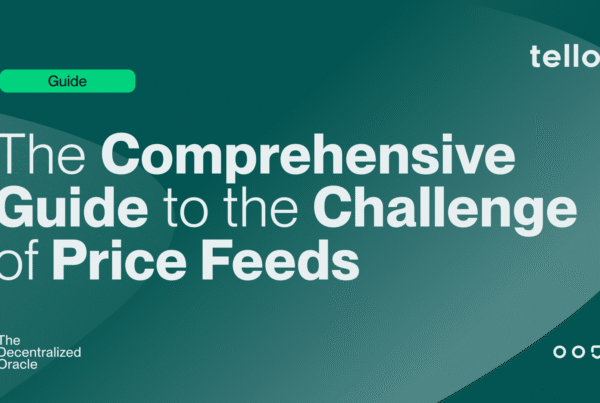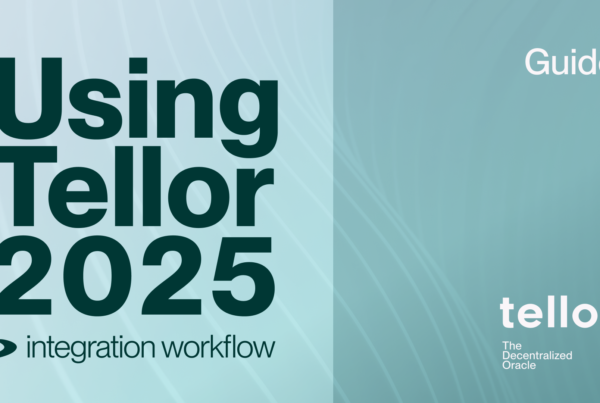
Tellor is a decentralized, censorship-resistant oracle protocol designed to power blockchain applications with reliable and user-tailored off-chain data. Building on years of successful upgrades and improvements, Tellor is evolving into its own Layer 1 blockchain, Tellor Layer. This transition will mark a new level of security and scalability for the oracle protocol, while continuing to prioritize industry-leading decentralization.
In this post, we’ll explore how the new Tellor system works from data submission to validator dynamics, bridging, and dispute mechanisms.
How Tellor Powers Secure Data
Tellor Layer is a stand-alone Layer 1 blockchain designed specifically for incentivizing the reporting and aggregation of data and facilitating data bridging across different chains. Unlike traditional oracles, Tellor functions as a fully decentralized data layer, bringing consensus to a wide range of subjective data.
How the Data is Made
In Tellor, reporters contribute data submissions to Tellor to earn rewards. They respond to either user requests (queries) or report to a governance chosen set of native data feeds, to earn time-based rewards. This incentivized structure ensures liveness keeping data updates fresh and continuous.
User Requests
Users request data by submitting a query, which includes a “tip” in Tellor’s native token, TRB, to incentivize timely responses. Once a query is made, any staked reporter can submit data for it, and other reporters can contribute their own response within a set time window. Afterwards, validators aggregate (typically by finding the median) the submissions to produce a final data point. This ensures that data is both accurate and weighted based on the amount of TRB staked by the reporters.
Tipping
Users can incentivize faster data submissions by funding their requests with tips in TRB. 98% of the tip is distributed to the reporters based on their weighted contributions, while 2% is burned as a safeguard against spam. Tips ensure that users get their specific data quickly and accurately.
How the Data is Secured
Validators
Tellor Layer is secured by a decentralized validator set, capped at 100 to balance security and data bridging efficiency. Validators are chosen based on their TRB stake and are responsible for validating data and voting on disputes. They also play a key role in bridging Layer data to various blockchains, contributing to a robust multi-chain ecosystem.
Dual Delegation
Tellor adds a unique twist to the proof-of-stake model by allowing TRB token holders to delegate their tokens twice: once for validating and once for reporting data. This allows for broader participation in reporting while maintaining the capped validator set for efficient bridging and throughput. While this introduces capital efficiencies, violations on the reporting or validator side lead to both sides being immediately reduced by the penalty for the dispute type.
Dispute Mechanism
Ensuring honest data reporting requires not only rewarding good behavior but also penalizing dishonest submissions. If a reporter provides incorrect data, anyone can raise a dispute. A voting process then takes place, and if the data is deemed false, the reporter loses staked TRB. Disputers, on the other hand, stand to gain from the slashed amount. This dispute mechanism ensures data accuracy and upholds the integrity of the network.
Robust vs. Edge Data
Unlike previous versions of the Tellor protocol, Tellor Layer allows for immediate use of “robust data,” which is verified by ⅔ of the reporter network. For less-supported data, known as “edge data,” it is recommended to handle optimistically, similar to previous versions of Tellor, incorporating a delay period to allow time for disputes.
Bridging
Tellor Layer enables seamless cross-chain data and token transfer. Data from Tellor Layer can be relayed to other blockchains using a light client bridge, allowing developers to integrate reliable, decentralized data into their applications on various networks. The Tellor Token Bridge allows TRB tokens to move between Ethereum and Tellor Layer. Validators oversee the bridging process to ensure its security.
Conclusion
Tellor Layer is the next evolution of the Tellor protocol, transforming it into a decentralized data network on its own Layer 1 blockchain. With expanded participation in data aggregation, a more robust dispute mechanism for accountability, and cross-chain capabilities, Tellor Layer enhances security, scalability, and reliability. This allows Tellor data to serve as a secure, censorship-resistant source for applications across the multi-chain ecosystem.
By fostering interoperability, versatility, and decentralization, Tellor continues to set the standard for decentralization in the oracle space.





